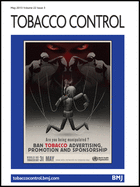TOB control:无烟客房真的无烟吗
2013-05-17 青楚 医学论坛网
在一个房间内持续吸烟后,一些残留烟草污染物会积聚在地毯、灰尘、室内装潢、床垫、窗帘和家具上,甚至穿透墙纸和油漆渗入石膏板墙内,这就是专家所说的“三手烟”。目前还没有确定的方法可以清理三手烟,尽管把吸烟者安排在指定的房间很容易,烟草本身却很难被限制。 美国圣地牙哥大学的一项研究纳入两名非吸烟女性,让她们在指定的房间内过夜(允许有一位非吸烟者到访),触摸一般酒店客人都会触摸的地方(窗帘、电视
在一个房间内持续吸烟后,一些残留烟草污染物会积聚在地毯、灰尘、室内装潢、床垫、窗帘和家具上,甚至穿透墙纸和油漆渗入石膏板墙内,这就是专家所说的“三手烟”。目前还没有确定的方法可以清理三手烟,尽管把吸烟者安排在指定的房间很容易,烟草本身却很难被限制。
美国圣地牙哥大学的一项研究纳入两名非吸烟女性,让她们在指定的房间内过夜(允许有一位非吸烟者到访),触摸一般酒店客人都会触摸的地方(窗帘、电视遥控器等)至少30秒。在入住前和离开房间时,分别测量女性受访者的手指和尿液的尼古丁和其他烟草副产品含量。
结果显示,在设有吸烟客房酒店内的非吸烟客房一般都有更多三手烟,物体表面尼古丁为禁烟酒店客房的2倍,空气中3EP(另一种烟草副产品)为7倍。在这样的房间内过夜后,第二天早上受访者手指尼古丁含量增加,尿液中的可替宁(一种二手烟暴露的生物标志物)含量为原先的5-6倍。
目前,尚不清楚这些烟草副产品是如何到达这些不允许吸烟的区域,作者认为可能是一种烟雾转移,来自其他忽略有关禁令的住客或酒店并没有给住客安排无烟房间。不过如同在你到达酒店房间前可能发生其他任何事情、留下或不留下其他任何物品一样,你只能不要去考虑了。
Study: People Test Positive for Smoke Exposure After Staying in Non-Smoking Hotel Rooms
PROBLEM
When rooms are continually smoked in, they become "reservoirs of tobacco smoke toxicants that accumulate in carpets, dust, upholstery, mattresses, curtains and furniture, penetrate wallpaper and paint, and are even stored in drywall." It's what some experts refer to as "third-hand smoke," and no one's quite sure how to clean it up. And while it's easy enough to keep smokers confined to designated rooms, smoke itself is harder to contain.
METHODOLOGY
Two non-smoking women were recruited by researchers at San Diego State University to spend their weekends at low to mid-budget local hotels. Overall, they sampled 30 non-smoking and 29 smoking rooms in hotels that allow smoking, and 10 rooms in hotels that ban it altogether.
Before they arrived for each 12 to 14-hour stay, a research assistant would set up equipment to measure the air quality and presence of surface contaminants in the room. The women would then spend the night (they were allowed one pre-approved, non-smoking visitor), being sure to touch everything a typical hotel guest would touch, from the drapes to the TV remote, for at least 30 seconds. The women's fingers and urine were tested for traces of nicotine and other byproducts of cigarette smoke before and after their stay.
RESULTS
Non-smoking hotel rooms generally contained more third-hand smoke when they were part of hotels that allowed smoking in other, designated rooms. They had, on average, twice the amount of nicotine on surfaces and seven times as much 3EP (another cigarette byproduct) in the air. In smoking-permitted rooms, of course, the presence of these contaminants was much higher.
The women, after spending the night in a hotel that permitted smoking, even after requesting a non-smoking room, the next morning had significantly more nicotine on their fingers, and five to six times the amount of cotinine -- a biomarker of second-hand smoke exposure -- in their urine.
IMPLICATIONS
It's unclear exactly how cigarette byproducts ended up in places they didn't belong. It could, write the authors, be the result of smoke migration, or from other patrons ignoring the ban, or from hotels not being entirely upfront about honoring people's requests for non-smoking rooms. Research budgets didn't allow for a proper analysis of luxury hotels, but the same principle probably applies across the board: Like most things that may have happened in a hotel room before you got there, and that may or may not have left some residue, you're probably best not thinking too much about it.

Thirdhand smoke and exposure in California hotels: non-smoking rooms fail to protect non-smoking hotel guests from tobacco smoke exposure
Introduction This study examined tobacco smoke pollution (also known as thirdhand smoke, THS) in hotels with and without complete smoking bans and investigated whether non-smoking guests staying overnight in these hotels were exposed to tobacco smoke pollutants.
Methods A stratified random sample of hotels with (n=10) and without (n=30) complete smoking bans was examined. Surfaces and air were analysed for tobacco smoke pollutants (ie, nicotine and 3-ethynylpyridine, 3EP). Non-smoking confederates who stayed overnight in guestrooms provided urine and finger wipe samples to determine exposure to nicotine and the tobacco-specific carcinogen 4-(methylnitrosamino)-1-(3-pyridyl)-1-butanone as measured by their metabolites cotinine and 4-(methylnitrosamino)-1-(3-pyridyl)-1-butanol (NNAL), respectively.
Findings Compared with hotels with complete smoking bans, surface nicotine and air 3EP were elevated in non-smoking and smoking rooms of hotels that allowed smoking. Air nicotine levels in smoking rooms were significantly higher than those in non-smoking rooms of hotels with and without complete smoking bans. Hallway surfaces outside of smoking rooms also showed higher levels of nicotine than those outside of non-smoking rooms. Non-smoking confederates staying in hotels without complete smoking bans showed higher levels of finger nicotine and urine cotinine than those staying in hotels with complete smoking bans. Confederates showed significant elevations in urinary NNAL after staying in the 10 most polluted rooms.
Conclusions Partial smoking bans in hotels do not protect non-smoking guests from exposure to tobacco smoke and tobacco-specific carcinogens. Non-smokers are advised to stay in hotels with complete smoking bans. Existing policies exempting hotels from complete smoking bans are ineffective.
本网站所有内容来源注明为“梅斯医学”或“MedSci原创”的文字、图片和音视频资料,版权均属于梅斯医学所有。非经授权,任何媒体、网站或个人不得转载,授权转载时须注明来源为“梅斯医学”。其它来源的文章系转载文章,或“梅斯号”自媒体发布的文章,仅系出于传递更多信息之目的,本站仅负责审核内容合规,其内容不代表本站立场,本站不负责内容的准确性和版权。如果存在侵权、或不希望被转载的媒体或个人可与我们联系,我们将立即进行删除处理。
在此留言







